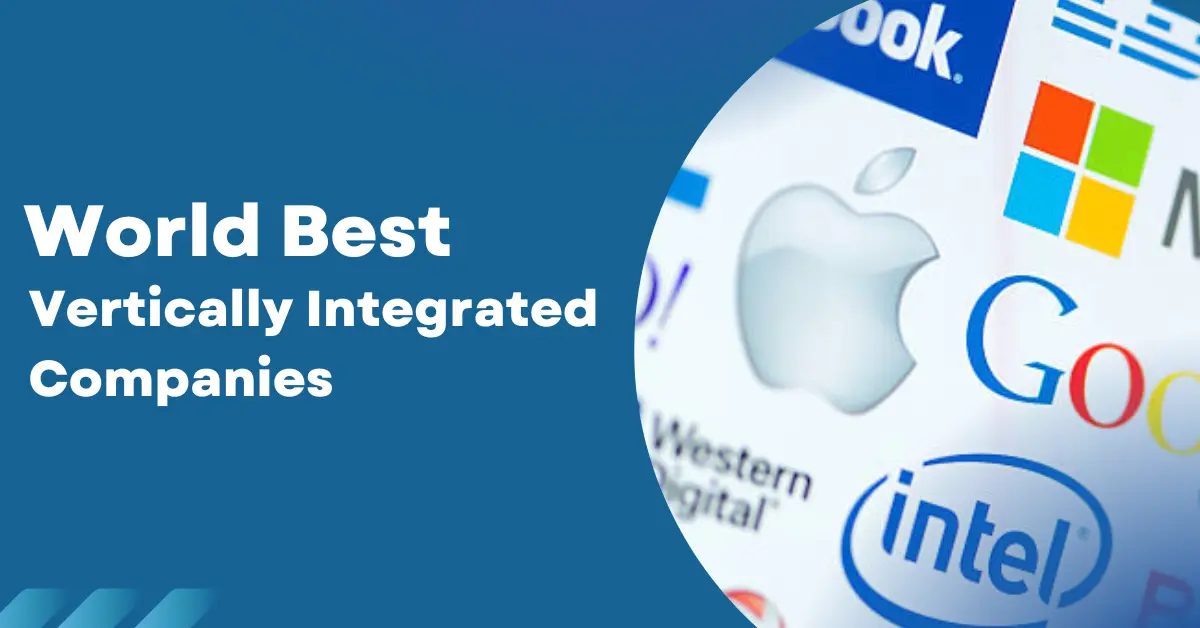Can Small Businesses Learn from the World’s Best Vertically Integrated Company?
Yes, absolutely! Small businesses can steal some seriously powerful moves from the world’s best vertically integrated company. Imagine running your entire operation—from sourcing to selling—under one roof.
Sounds like a big dream? Maybe. But 2025 is all about working smart, not hard.
In this blog, we’ll decode how vertical integration works and what small businesses can learn from the big players. We’ll keep it simple, relatable, and full of real examples you can actually use.
What Is a Vertically Integrated Company?
A vertically integrated company owns or controls its supply chain. From raw materials to final delivery, everything happens in-house.
Example: Apple designs its chips, builds its devices, and even owns retail stores. It’s a textbook example of vertical integration.
Key Characteristics
These features make the world’s best vertically integrated company not just powerful—but legendary.
How Small Businesses Can Take Notes from the Big Guys
You don’t need billions in the bank to think like Apple or Tesla.
1. Start Small, Integrate Wisely
You don’t have to own a factory. Just ask: “What part of my supply chain can I manage better myself?”
2. Build Relationships, Not Just Pipelines
Even if you outsource, treat partners like part of your ecosystem. Long-term collaboration means better pricing and priority service.
3. Control Customer Experience
Design how customers feel, not just what they get. Add a personal note, offer quick delivery, or create scent-enhanced packaging like Scent n Stories—a perfume brand that infuses class with creativity.
The Power of Vertical Integration: A Table Breakdown
| Company Name | Industry | Integration Type | Benefits Reaped |
| Apple | Tech | Forward + Backward | Design control, higher margins |
| Tesla | Automotive | Full Integration | Cost savings, fast innovation |
| Zara | Fashion | Backward | Fast fashion, low inventory cost |
| Nestlé | Food & Beverage | Forward | Supply chain control, quality |
The world best vertically integrated company masters this table—and you can copy its homework!
2025 Vertical Integration Trends for Small Businesses

This year, small players are getting more creative and agile.
1. Micro-Manufacturing Is Booming
With 3D printers and micro-factories, small businesses can produce custom items in-house.
2. Dropshipping Is Evolving
Instead of generic suppliers, businesses are partnering with exclusive local makers to own more of the brand experience.
3. In-House Tech is More Affordable
Platforms like Shopify, QuickBooks, and HubSpot give even mom-and-pop shops enterprise-level control.
And when it comes to business registration, platforms like Waystax make setup and registration compliance super easy—no need for middlemen.
Pitfalls to Avoid When Trying to Integrate
While aiming for the stars, don’t trip over small stones.
1. Don’t Overstretch Resources
Trying to control too much too soon can backfire. Focus on what adds the most value first.
2. Know What to Outsource
You don’t have to do everything. For fire safety or workplace security, you’re better off relying on experts like Greentech Solutions.
3. Stay Customer-Focused
Don’t lose sight of the user while building your internal empire. Every move should improve their experience.
Where to Get Business Ideas and Register Smartly
If vertical integration sounds too heavy right now, you can start by:
Lessons from the World Best Vertically Integrated Company
Here’s what you can take away—without needing a billion-dollar valuation:
Key Takeaways:
It’s not about copying Apple. It’s about adopting the mindset of control, quality, and agility.
Final Thoughts: Big Dreams Start with Small Wins
Being like the world best vertically integrated company isn’t just for the Fortune 500s. With a clever mindset and smart tools, small businesses can build mini-empires of their own.
From sourcing your own supplies to controlling your brand voice—every tiny decision adds up.
Also, if you’re venturing into eCommerce, why not scent your products like Scent n Stories or ensure safe operations with Greentech Solutions? Or better yet, get legal with Waystax and start strong.
In the end, it’s 2025—and the power to integrate is now in your hands.

